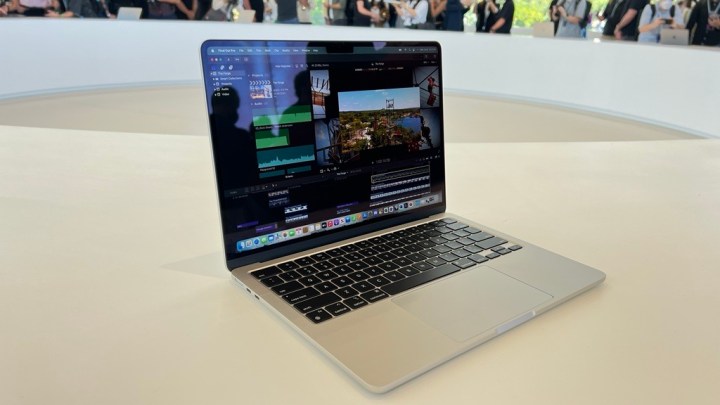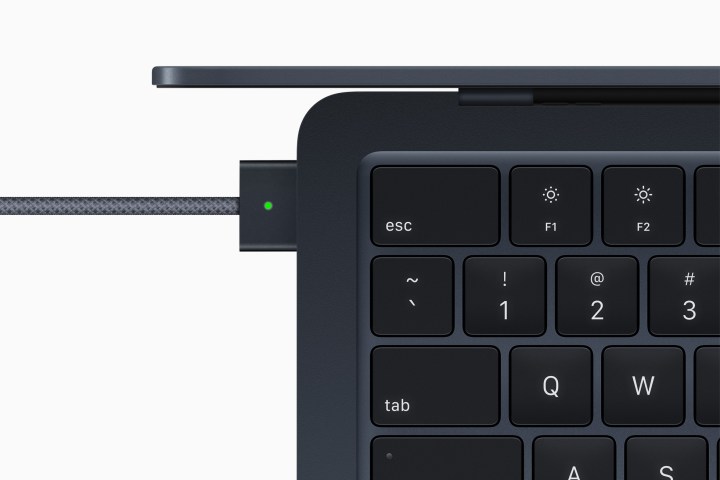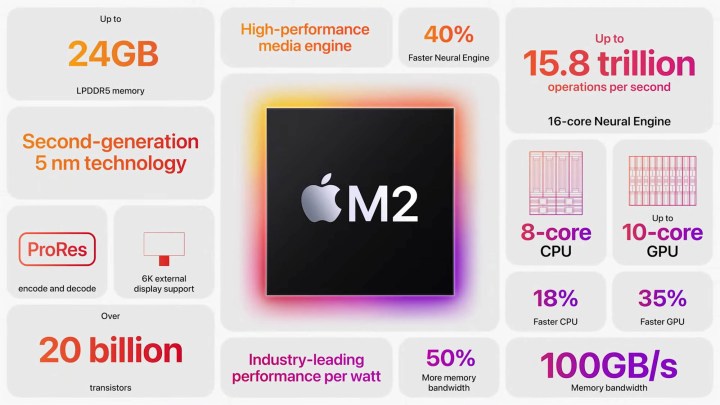During the WWDC 2022 event, Apple announced an upcoming MacBook Air equipped with the next-gen M2 chip. This is the second iteration of Apple’s own silicon, previously seen in many products under the names of M1, M1 Pro, M1 Max, and M1 Ultra.
Although the M2 announced during the WWDC 2022 is not quite the full-fledged version we’ll be seeing in 2023, it still ushers in a new generation of Apple silicon. How does the M2 compare to the M1? We will go over all the differences down below.
Pricing and availability
So far, the M2 chip will make its debut inside the 2022 version of the lightweight MacBook Air M2, as well as a new 13-inch MacBook Pro. Both the laptops are said to be available starting from July 2022, each with its own set of specifications and pricing.
When it comes to the MacBook Air, you’ll still be able to buy the M1 version of the laptop, only slightly cheaper. The M1 MacBook Air will now start at $999, while its upgraded M2 version will bump up the price to $1,199 and above. The top model of the M2 Air is priced at $1,499 and brings upgraded storage, among other things.
The 13-inch MacBook Pro marks a comeback for the family, and both the 13-inch models will come equipped with an M2 chip. You’ll have to pay $1,299 for the basic version or $1,499 for the upgraded version. Pre-orders are now open on Apple’s official website.
Apple is keeping the M1 MacBook around at a cheaper price, but we don’t yet know if they’ll do the same for other M1 products. It’s safe to assume the upcharge on the M2 MacBook Air has more to do the redesigned chassis and new screen and less to do with the chip upgrade.
The M1 chip can be found in a wide variety of Apple products, most notably in the Mac Mini. Of course, it’s been expanded upon for more powerful products. The MacBook Pros also have it, but these are the 14-inch and 16-inch versions, and they come equipped with the M1 Pro or the M1 Max, priced at anywhere between $1,999 and $3,499.
The best version of the M1, the M1 Ultra, can be found inside the $4,999 Mac Studio. The M2 versions of these more powerful chips will likely not launch until 2023.
Specs

Before Apple ever unveiled the M2, it already had a wide range of its own M1 chips. Once the company decided to move away from Intel silicon, it continued to expand the M1 family step by step, first unveiling the M1 itself, then the M1 Pro and the M1 Max, and finally, the M1 Ultra. Each found its way into a different Apple product, and each boasts its own performance capabilities.
Comparing the M2 to the basic M1 doesn’t bring many differences, at least not on the surface. Both the M1 and the M2 have eight cores, but according to Apple, the M2 has the upper hand — the cores have been made using Apple’s next-gen architecture. This should bump the performance by up to 18% compared to the basic M1, according to Apple.
The M2 chip shows a lot of similarities to its older sibling also if you look under the hood. Made on a refined 5nm process node, it’s manufactured in a near-identical way to the M1. Apple is saving the larger upgrades and changes for 2023 or later, and in the meantime, we have this in-between version of the M2 to hold us over.
Apple’s M2 chip will come with up to 24GB of LPDDR5 memory, up to 25% more transistors than the M1, adding up to more than 20 billion, and 10 graphics cores — two more than the M1. The extra graphics cores will likely prove to be where we see the largest improvement in terms of performance, in addition to the inclusion of the same media engine that was included in the M1 Pro and M1 Max.
All in all, Apple promises that the CPU will be faster by up to 18%, and the GPU will see even bigger gains — up to 35%. Apple also notes a 50% increase in memory bandwidth between the M1 and M2.
Comparing the M2 to the M1 Ultra is unfair and not really worth looking into. Undoubtedly, Apple will release upgraded versions of the chip as time goes on, and we’ll be able to make a reliable comparison when that happens. For the time being, M2 will certainly be the winner in a battle of “M1 versus M2,” but the numbers may not be as huge as what we might see in the future.
Ports

In its basic form, the M1 chip didn’t have a whole lot to offer in terms of ports. M2 seems to improve on that. Let’s draw a comparison between the M1 MacBook Air and the new M2 version that will be coming out in July.
The M1 MacBook Air comes with two Thunderbolt/USB 4 ports that support charging, connecting an external monitor via DisplayPort, Thunderbolt 3 connections, and lastly, USB 4 and 3.1 connections. The laptop also came with a 3.5mm headphone jack.
The updated M2 version still only has two Thunderbolt/USB 4 ports to offer, but it brings back an old Apple favorite — MagSafe 3. Strangely enough, the 13-inch MacBook Pro sticks to just two Thunderbolt/USB 4 ports and doesn’t support MagSafe 3.
M2 is better, but this is only the beginning

Going by pure numbers alone, it does seem that the M2 chip will be better than the basic M1. That should come as no surprise. Although both the chips are built on a near-identical architecture and have the same core counts, the M2 does introduce some changes. We’re getting two more GPU cores, a larger transistor count despite maintaining the same size, and various tweaks that, according to Apple, should add up to a near 20% increase in performance.
However, as we noted in our initial coverage of the chip, the M2 that we’re getting in 2022 is an improvement, but don’t expect a huge jump ahead. It certainly marks an update to the M1, but it’ll like not be going to have the same groundbreaking effect the original M1 had. For example, this is not a jump similar to comparing the M1 to the M1 Ultra — it’s just a small step on a road that will go on for many months to come.
It’s too early to tell where exactly Apple might take the M2. It’s possible that the jump from the M1 to the M2 will remain slightly less-than-impressive even as the improved versions of the chip begin to roll out over time, such as the M2 Pro or the M2 Max. The real generational jump might not happen until the (rumored) M3 eventually comes out.





